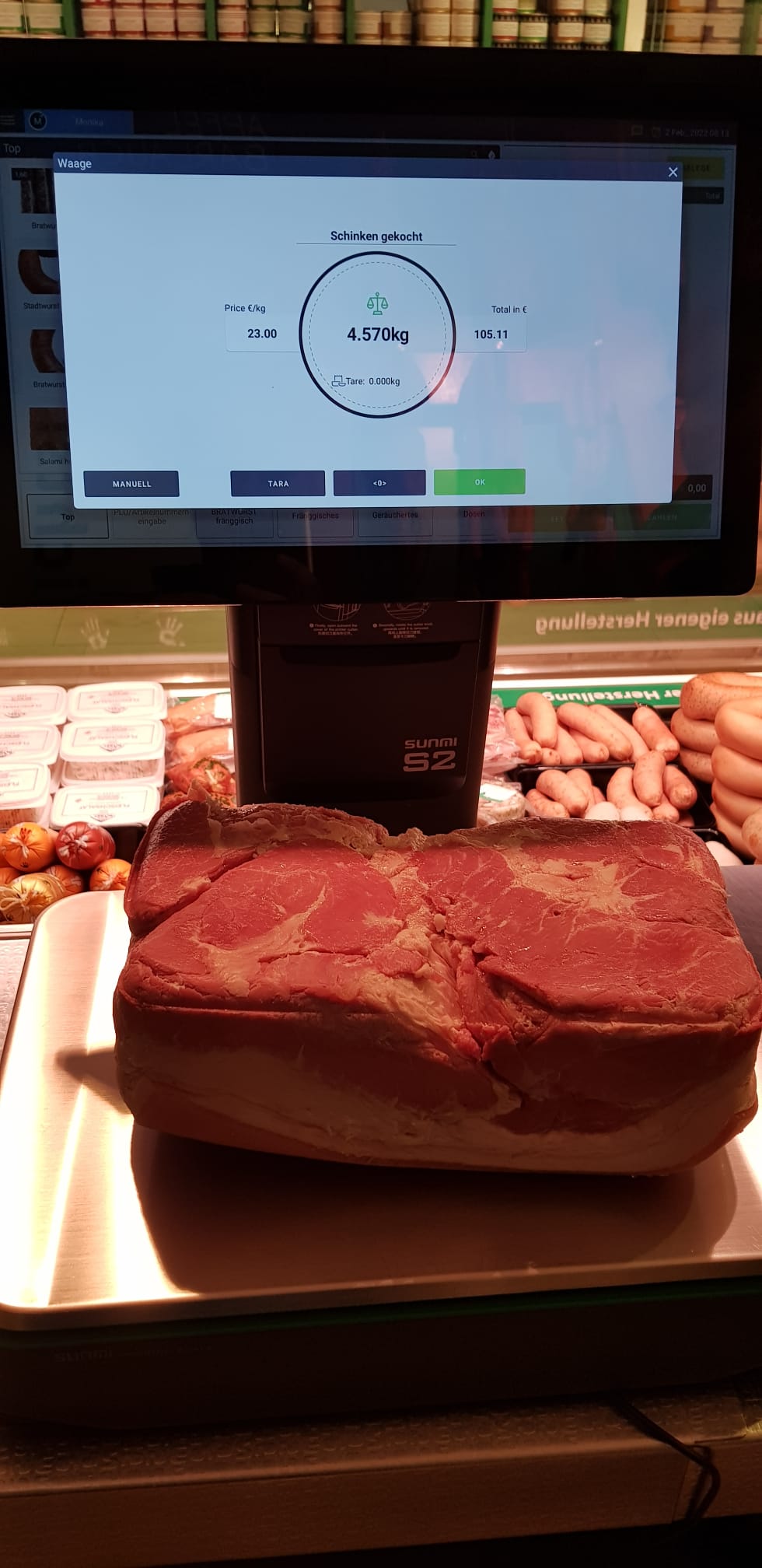Theorie muss nicht langweilig sein! Stundenlang im Klassenraum sitzen ist nervig! Welche Alternativen gibt es? Wie kann man jungen Menschen – die sich mit dem Lernstoff nicht ganz so leicht tun – das theoretische Wissen des Metzgerhandwerks vermitteln?
Ich empfehle dafür den Unterricht raus aus dem Klassenzimmer in die Produktionsräume zu verlegen. Dadurch können die zu vermittelnden Inhalte anhand der Praxis erklärt werden. Das rein theoretische Erarbeiten fällt somit weg. Ich denke, dass es sinnvoller ist. Die Verarbeitungsschritte zu erklären, anhand eines Beispiels zeigen und dann die Lehrlinge einmal selbst umsetzen lassen sinnvoller ist.
Bei mir in der Berufsschule wird beispielsweise gerade die Gewichtskalkulation in Mathematik behandelt. Die größten Probleme mancher Mitschüler liegen darin sich das Schema zu merken. Dabei muss man das gar nicht auswendig lernen, sondern nur durchgehen welche Schritte in der Produktion nacheinander Ablaufen.
Schema am Beispiel des Kochschinkens:
fertig zugeschnittener Schinken
+ Spritzzunahme
= gepökelter Schinken
– Garverlust
= Kochschinken
Das kann auch ganz einfach im Produktionsraum durchgegangen und geübt werden, indem der zugeschnittene Schinken gewogen wird. Anschließend wird gepökelt das Gewicht ermittelt. Die Differenz entspricht der Spritzzunahme. Der gepökelte Schinken wird gegart, um das Fertigprodukt zu erhalten. Der Kochschinken wird gewogen damit der Garverlust berechnet werden kann. So kann Mathe für die Lehrlinge etwas praxisnaher gestaltet werden.
Fachtheorie Unterricht besteht bei mir an der Berufsschule meistens aus dem Ausfüllen von Arbeitsblättern oder dem zusammenfassen von Texten aus dem Fachbuch. Danach erfolgt meistens eine Gruppenarbeit, in der ein Handout erstellt werden muss. Langweiliger geht’s nicht. Dabei könnte man den Unterricht wesentlich spannender gestalten.
Die Theoriestunde in die Wurstküche verlegen. Die Wurstwaren mit den Lehrlingen herstellen und die Theorie während des Herstellungsprozesses erklären. Ich denke, dadurch bleibt mehr vom Theoriestoff in den Köpfen als beim reinen Abschreiben vom Buch. Zum einen hat man die Erklärung, zum anderen sieht man wie zum Beispiel Emulgatoren oder Umrötehilfsmittel wirken. Durch Vergleiche eines Wurstbräts mit und ohne Umrötemittel kann die Wirkungsweise ganz einfach gezeigt werden.
Um den Herstellungsprozess festzuhalten, würde ich die Lehrlinge bitten Fotos zu machen. Diese Bildergeschichte soll im Anschluss mit Untertiteln versehen werden. Dadurch hat jeder Auszubildende seine eigene Zusammenfassung des Herstellungsprozesses.
Ein Kurzvideo statt einer Bildergeschichte ist auch möglich. Zum Lernen kann das dann einfach angeschaut werden.
Was haltet ihr von meinen Ideen? Welche Ansätze habt ihr, um das theoretische Wissen näherzubringen?
Theory is boring!
Theory doesn´t have to be boring! Sitting in the classroom for hours is boring! Which alternatives are there? How can young people – which have problems with learning theory – be thought theoretical knowhow?
I advise to change the location of the theory lesson. Theory can be taught in the sausage production as well. The content can be explained during producing sausages. So, it isn`t pure theory anymore. I think it`s better, to explain the processing steps and show them to the apprentices. After the explanation the apprentices can realize the steps themselves once.
At my vocational school I get taught weight calculation in mathematics at the moment. Some of my classmates have problems remembering the scheme. The scheme doesn`t have to be learnt by heart. It can be figured out by thinking about in which row you do the steps at the butcher shop.
Here the scheme for cooked ham:
ham
+ injection increase
= cured ham
– cooking loss
= cooked ham
This can be shown and practised in the production room, by weighing the ham. After curing you note the weight again. The difference is the injection increase. For producing the finished product, the cured ham gets cooked. If you place the cooked ham on a scale and note the weight again, you can calculate the cooking loss. That`s it. Math can be arranged more practical like this, which makes it easier for the apprentices to follow and understand.
The theory lessons in which I get taught how to produce sausages contain a lot of times filling out working sheets or summarizing chapters of the text book. Followed by a group work in which we have to create a handout. It couldn`t be more boring. There are so many possibilities to make the lessons more interesting.
Theory lessons could take place in the sausage production too. There sausages get produced with the apprentices. During the production process theory can be explained. I think it is easier to remember this, than a worksheet you copied from a book without thinking about the content. On one hand side you have an explanation, and on the other side you get to see the effect of emulsifiers and colour developers. Their effect can be shown by performing an experiment in which you compare sausage meat with and without colour developer.
I would ask the apprentices to take photos during the production process, to record the process. The next step is to write a short subtitle to each photo. As a result, each apprentice has a picture story as a summary.
A short clip can be shot as well, instead of creating a picture story. To prepare for an exam this can be watched.
What do you think about my ideas? Which ideas do you have to impart theoretical knowledge to apprentices?

